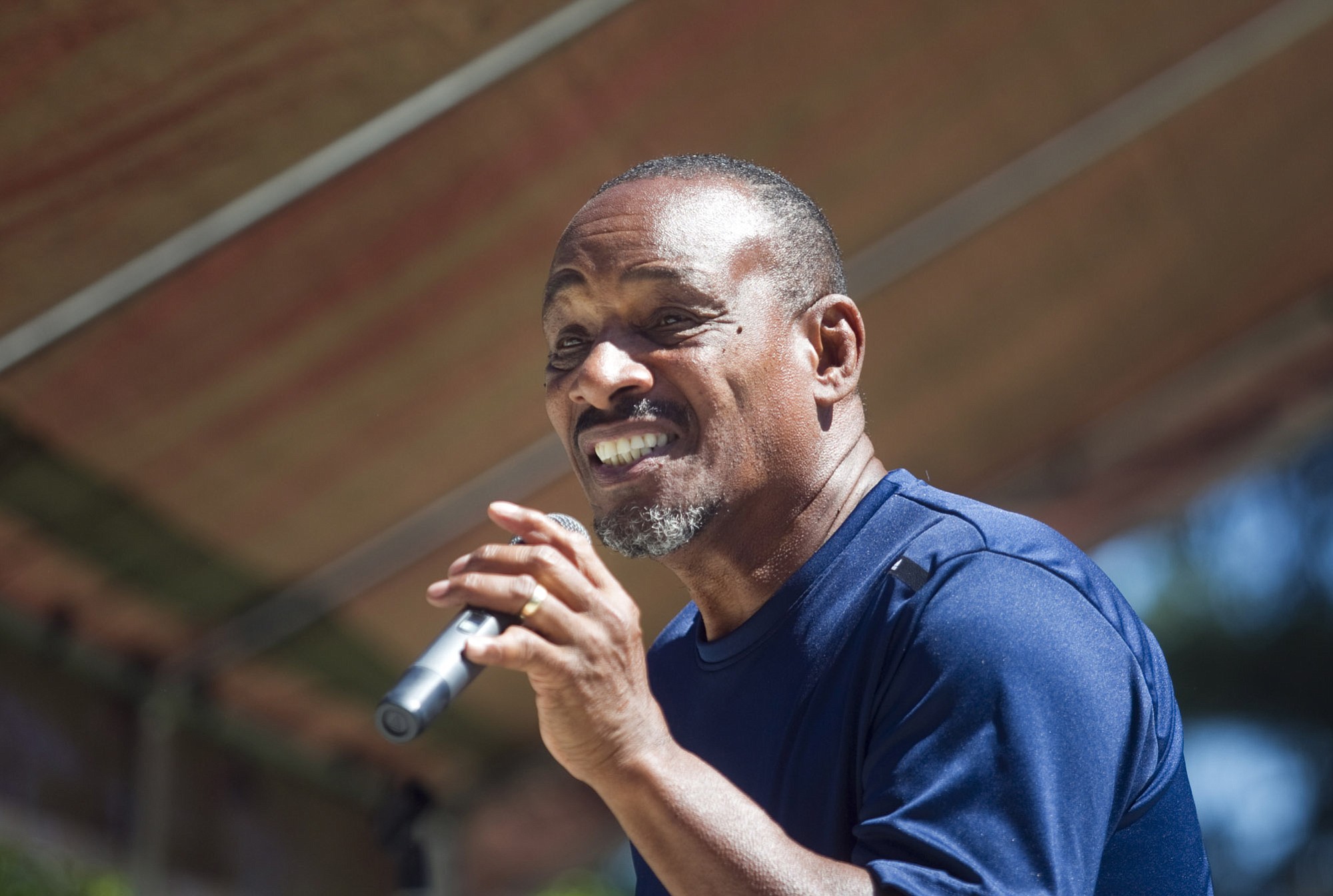Back in the day, Little Curtis & the Blues often performed at the Trapadero Club, a city-sponsored teen hangout in downtown Vancouver.
On Saturday, Curtis Nettles was back behind the mic in Vancouver, singing “Stand By Me,” “My Girl,” and other soul classics for some of the same people who used to pack the Trapadero Club to hear him sing in the late 1960s when they were students at Fort Vancouver and Hudson’s Bay High School.
Nettles, a 1966 graduate from Hudson’s Bay who lives in Pasco, returned to Vancouver for the third annual “Back in the Day” reunion at Marshall Park, hosted by members of Vancouver’s earliest African-American families. The idea for an annual reunion grew from the 2012 publication of “First Families of Vancouver’s African American Community: From World War II to the Twenty-first Century.”
“It brings tears to my eyes,” said Nettles, asked how it felt to be singing for 60-somethings who have his voice entwined with their memories of being teenagers.
Among those who went to the Trapadero Club was Juanita Young, a member of the reunion planning committee. Young said her parents moved to Vancouver from Louisiana in the late 1940s, when her father was assigned to the U.S. Army post at Vancouver Barracks.
Young, 62, said before the book’s publication she and her childhood friends would see each other only at funerals.
“We want this to continue,” Young said Saturday afternoon at a park shelter. “We want it to go on forever.”
About 250 people attended the cookout, which lasted six hours.
The 2012 book was written by Battle Ground author Jane Elder Wulff, who worked on the project with Cornetta Jackson Smith. Wulff interviewed members of 35 families that came west to work in war-related industries during World War II, primarily at the Kaiser Shipyard. Several families initially lived in Vanport, a housing development at what now is Portland’s Delta Park. They moved to Vancouver after the Vanport flood of 1948. After the war ended and the shipyard closed, the NAACP worked with a few local companies, including Crown Zellerbach, Alcoa and Hidden Brick Co., to hire black employees.
At the peak of the war, there were close to 9,000 black people in Vancouver.
From the 1940 U.S. Census to the 1950 U.S. Census, the city’s total population grew from 18,788 to 41,664.
Following the war, the Vancouver Housing Authority, which had built residences for thousands of shipyard workers, closed some of its units and the general real estate market was mostly closed to blacks, Wulff said.
According to the 2010 Census, the city has 161,791 residents, and 4,763 residents (2.9 percent of the population) are black.
Young said her family was the first black family to buy a home in west Vancouver. Making friends wasn’t difficult — “We didn’t see color,” she said — but one of her sisters, Mary Clisby, recalled the first time a classmate at Shumway Junior High invited her home. The classmate’s mother looked surprised when she opened the door, but said nothing. Then her classmate’s father came home, called her a racial epithet and ordered her to leave.
After graduating from Fort Vancouver, Young and her sister Jeanette Ward planned to rent an apartment in downtown. When they called to inquire about the apartment, the landlord sounded excited that the sisters had good jobs working at a telephone company. When she saw the sisters the next day, however, her first words were, “It’s been rented.”
Young said she was in a bad mood the next day at work. Her manager asked what was wrong. She told him, he called the landlord, “and we moved in that next weekend,” Young said.
Wulff said Saturday that she’d like to see the “First Families” project keep evolving. Possibilities include an e-book version and coordinating with school districts to incorporate “First Families” in the curriculum. The book can be bought for $20 at the Clark County Historical Museum and Vintage Books. Proceeds benefit the Vancouver chapter of the NAACP.
“The First Families project is an ongoing mission to put a spotlight on this aspect of Vancouver’s history,” Wulff said. “This is one of the strong threads of the tapestry … it’s not recognized because it’s consistently small, but it’s part of the story in some pretty important ways.”
As for other former Trappers and Eagles who loved dances at the Trapadero Club and are disappointed they missed Nettles’ performance, he said Little Curtis & the Blues are planning their own reunion next year.
Mike Klinger, who plays keyboards, stopped by the picnic Saturday to watch Nettles, as did drummer Gary Hobbs. Klinger said guitarist Steve Campbell, trumpet player Lee Bradford, bass player John Liljadahl and saxophone player Dennis Springer are all up for a 2015 concert. Nettles said the group will have to rehearse so they can put on a quality show for fans who, like on Saturday, want to relive what it was like, back in the day.



